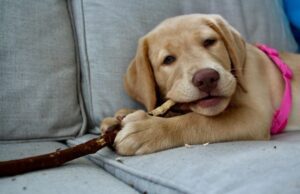Introduction:
Dog treats have become an integral part of pet ownership, serving as rewards, training aids, and even snacks for our beloved furry companions. However, have you ever wondered how these treats are made? What goes into the process of manufacturing them?
In this blog post, we delve into the world of dog treat manufacturing, uncovering the steps involved in creating these tasty delights that dogs adore.

Understanding the Ingredients:
Before delving into the manufacturing process, it’s essential to understand the ingredients used in dog treats. While ingredients may vary depending on the type and brand of treat, common components include meat, grains, vegetables, fruits, and added vitamins and minerals. Manufacturers often prioritize using wholesome and natural ingredients to ensure the treats are nutritious and safe for consumption.
Step 1: Recipe Development The journey of creating a dog treat begins with recipe development. Manufacturers work with animal nutritionists and food scientists to formulate recipes that meet specific nutritional standards and taste preferences. They carefully select ingredients, considering factors such as flavor, texture, and nutritional content. Trial and error are common in this phase as manufacturers strive to perfect the recipe before moving to production.

Step 2: Ingredient Sourcing Once the recipe is finalized, the next step is sourcing the ingredients. Manufacturers source ingredients from trusted suppliers, ensuring they meet quality and safety standards. For example, meat used in dog treats must come from approved sources and undergo rigorous inspection to prevent contamination and ensure freshness. Similarly, grains, vegetables, and fruits should be free from pesticides and other harmful substances.
Step 3: Mixing and Blending With the ingredients in hand, manufacturers begin the mixing and blending process. This step involves combining the various ingredients according to the recipe specifications. Industrial mixers are used to ensure thorough blending and homogeneity of the mixture. For example, in the case of meat-based treats, the meat is ground and mixed with other ingredients such as grains and vegetables to create a uniform dough-like consistency.

Step 4: Forming and Shaping Once the mixture is thoroughly blended, it’s time to form and shape the treats. Manufacturers use specialized equipment such as extruders, molds, or cookie cutters to create uniform shapes and sizes. The treats are formed into biscuits, bones, sticks, or other shapes depending on the desired end product. Consistency is crucial in this step to ensure that each treat meets the same quality standards.
Step 5: Cooking or Drying After shaping, the treats undergo cooking or drying to remove moisture and ensure shelf stability. Cooking methods vary depending on the type of treat and the desired texture. Some treats are baked in ovens, while others are cooked using methods such as dehydration or air-drying. Cooking not only removes moisture but also enhances flavor and ensures that the treats are safe for consumption.

Step 6: Cooling and Packaging Once cooked or dried, the treats are allowed to cool before packaging. Cooling helps the treats retain their shape and prevents them from becoming soggy. After cooling, the treats are packaged in appropriate packaging materials, such as bags or containers, to preserve freshness and prevent contamination. Packaging may include labeling that provides information on ingredients, nutritional content, and feeding guidelines.
Quality Control and Testing:
Throughout the manufacturing process, quality control is paramount to ensure that the treats meet the highest standards of safety and quality. Manufacturers conduct rigorous testing at various stages, including testing raw materials for contaminants, monitoring production processes for consistency, and conducting final product testing for taste, texture, and nutritional content. Additionally, manufacturers adhere to regulatory standards and certifications to guarantee the safety and integrity of their products.

Conclusion:
The process of manufacturing dog treats involves careful planning, precise execution, and a commitment to quality and safety. From recipe development to packaging, each step is meticulously carried out to create treats that are not only delicious but also nutritious and safe for our canine companions. By understanding the journey behind the creation of dog treats, pet owners can make informed choices and ensure that they are providing their furry friends with the best possible snacks. So, the next time you reward your dog with a tasty treat, remember the intricate process that goes into making it possible.












